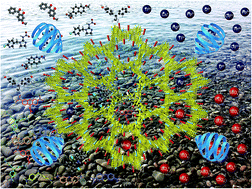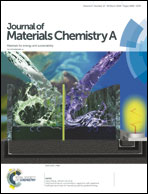Metal–organic framework technologies for water remediation: towards a sustainable ecosystem
Abstract
Having access to clean water is a mandatory requirement for the proper development of living beings. So, addressing the removal of contaminants from aquatic systems should be a priority research topic in order to restore ecosystem balance and secure a more sustainable future. The fascinating structures and striking physical properties of metal–organic frameworks (MOFs) have revealed them as excellent platforms for the removal of harmful species from water. In this review, we have focused our attention on critically highlighting the latest developments achieved in the adsorptive removal of inorganic – metal cations, inorganic acids, oxyanions/cations, nuclear wastes and other inorganic anions – and organic – pharmaceuticals and personal care products, artificial sweeteners and feed additives, agricultural products, organic dyes and industrial products – contaminants commonly found in wastewater using MOF technologies. In particular, we have attempted to give a clear insight into the different synthetic strategies for water remediation, stressing the wide tunability of MOFs. For this purpose, we have classified these two kinds of pollutants into different subfamilies, based on their chemical composition or common use. Finally, we have proposed some future trends and challenges that need to be addressed for widening the range of applicability of MOFs and making solid headway towards sustainable development.

- This article is part of the themed collections: Recent Review Articles and 2018 Journal of Materials Chemistry A HOT Papers


 Please wait while we load your content...
Please wait while we load your content...